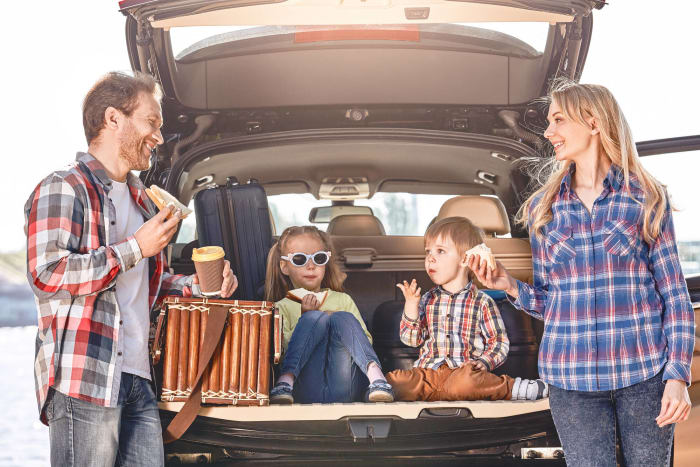Embarking on a road trip with children can be an exciting adventure and a wonderful opportunity to introduce them to the fascinating world of maps. Understanding maps is a vital skill that enhances spatial thinking, navigation abilities, and overall curiosity about the world. In this article, we will explore how to teach kids about maps on road trips, making the journey both educational and enjoyable for everyone involved.
On road trips, maps become more than just a tool for navigation; they transform into a gateway for young minds to connect with geography, landmarks, and the journey itself. Let’s delve into various strategies and activities that will engage your kids and spark their interest in cartography.

Why Teach Kids About Maps?
Maps are not just about finding directions; they are about understanding our surroundings and the world at large. Learning to read maps helps children develop important skills such as spatial awareness, problem-solving, and critical thinking. It also fosters a sense of adventure and curiosity, encouraging them to explore new places with confidence.
Benefits of Map Reading
1. **Enhances Spatial Awareness**: By understanding distances and directions, children can better comprehend the space around them.
2. **Boosts Problem-Solving Skills**: Figuring out routes and landmarks encourages analytical thinking.
3. **Encourages Independence**: Knowing how to use a map empowers kids to navigate independently in the future.
Preparing for the Road Trip
Before hitting the road, it’s essential to prepare some materials and plan activities that will keep your children engaged. This preparation will ensure that your road trip is both educational and enjoyable.
Gathering Materials
1. **Maps and Atlases**: Invest in a good road atlas or print maps of your route. You can find excellent resources online or in bookstores.
2. **Digital Tools**: Consider using GPS or map apps on a tablet or smartphone to complement physical maps.
3. **Map Games and Puzzles**: Pack some map-themed games or puzzles to keep children entertained and learning.
Planning Activities
1. **Create a Travel Journal**: Encourage your child to document their journey by drawing maps and noting landmarks they see along the way.
2. **Storytelling with Maps**: Use maps to tell stories about the places you’ll visit, incorporating history and fun facts.
3. **Mapping Challenges**: Set challenges for your kids, like finding the shortest route between two points or identifying states based on their shapes.
Teaching Map Basics
Start by introducing your kids to the basic elements of a map. Understanding these fundamentals will enable them to interpret and use maps more effectively.
Understanding Symbols
Maps are full of symbols representing various features such as roads, rivers, and landmarks. Teach your kids what these symbols mean and how to interpret them.
Reading a Compass
Introduce your child to the compass rose, explaining the cardinal directions (North, South, East, West) and how to use them for navigation.
Measuring Distance
Show your kids how to measure distances using the map scale, helping them understand how far they are traveling.
Interactive Map Activities
Engage your children with interactive activities that make learning about maps fun and memorable.
Scavenger Hunt
Create a scavenger hunt using maps, where kids must find specific locations or landmarks. This activity reinforces their map-reading skills while adding an element of adventure.
Map Drawing
Encourage your children to draw their own maps of the places you visit. This activity enhances their understanding of map elements and boosts creativity.
GPS Navigation
Let your child take charge of the GPS and guide you to your destination. This hands-on experience will give them a practical understanding of digital maps.
Resources for Map Learning
Utilize various resources to enhance your child’s understanding of maps and geography.
Books and Guides
Invest in child-friendly books and guides about maps and geography. These resources often include engaging illustrations and activities.
Online Tools
Explore online platforms and apps that offer interactive map activities and games. Websites like [National Geographic Kids](https://kids.nationalgeographic.com/games) offer excellent resources for young explorers.
Making Map Learning Fun
To keep your kids interested, it’s crucial to make map learning an enjoyable experience. Here are some tips to ensure they have fun while learning.
Incorporate Technology
Use technology to your advantage by incorporating apps and games that make map learning interactive and engaging.
Storytelling and Adventure
Create stories and adventures centered around maps. For example, pretend you’re explorers looking for treasure using a map, adding an element of excitement to the learning process.
Reward and Celebrate
Celebrate your child’s achievements and progress in map reading with small rewards or special treats, motivating them to continue learning.
Conclusion
Teaching kids about maps on road trips is a rewarding experience that equips them with valuable skills for life. By incorporating fun activities, interactive tools, and hands-on experiences, you can turn your journey into a memorable educational adventure. Remember, it’s not just about reaching the destination; it’s about the journey and the knowledge gained along the way.

FAQ
What age is appropriate to start teaching kids about maps?
Children as young as five can begin learning the basics of maps, such as recognizing symbols and understanding directions.
How can I make map learning engaging for my kids?
Incorporate games, storytelling, and hands-on activities to make map learning fun and engaging for your children.
What resources are available for teaching kids about maps?
There are numerous books, online platforms, and apps available that offer interactive and educational resources for teaching kids about maps. Websites like National Geographic Kids provide excellent materials for young learners.
This article contains affiliate links. We may earn a commission at no extra cost to you.

